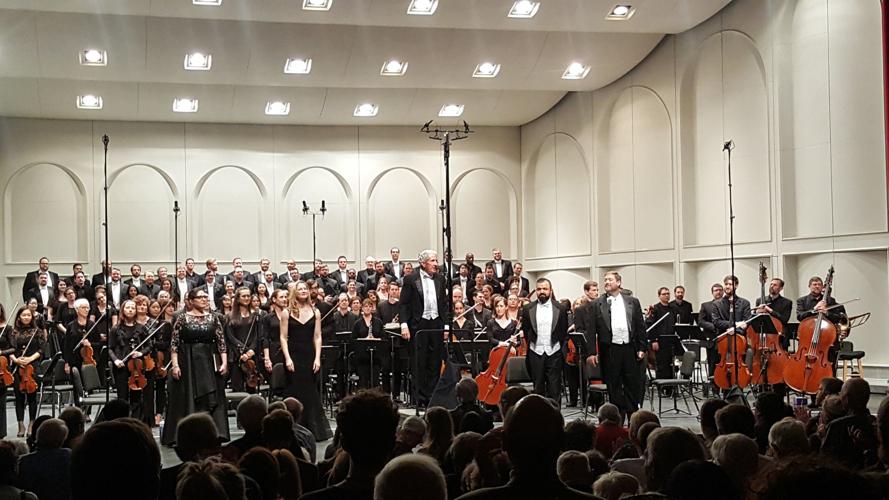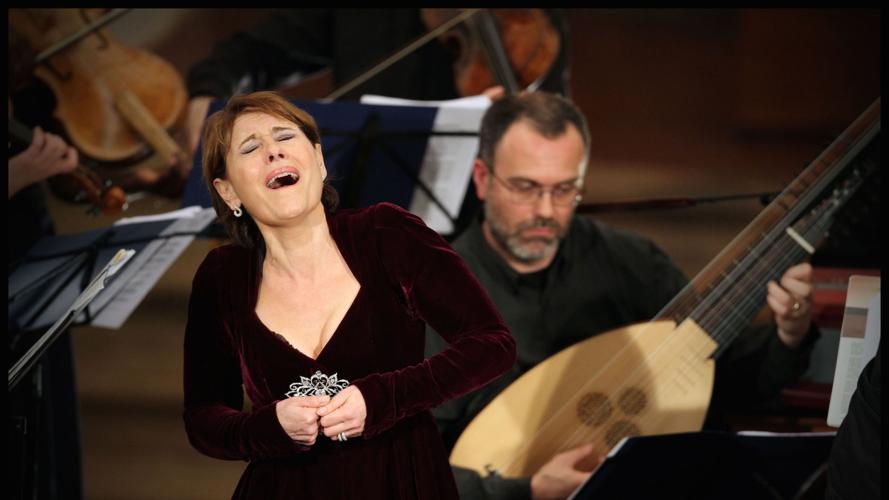True Concord Voices & Orchestra will close out its 2017-18 season next month with music that conjures up poet Emily Dickinson.
Expect it to be light and bright, virtuosic at times, but overall fairly uncomplicated. Like a gentle breeze blowing after a turbulent storm.
The choir deserves the break after the season its had, which included Bernstein's Mass in January and Verdi's Requiem on Sunday.
The Mass was a big undertaking, complete with a world-renown soloist in Jubilant Sykes and a troupe of dancers from the University of Arizona.
But the Verdi was bigger: a choir of 70, an orchestra of 50 and four outstanding soloists filling the Centennial Hall stage on the University of Arizona campus before an audience of about 1,400. The 90-minute concert closed out UA Presents 2017-18 classical music series.
Sunday's concert, True Concord's second performance of the Verdi last weekend, featured the combined vocal powers of the True Concord choir and the UA Arizona Choir, under the baton of outgoing UA choral director Bruce Chamberlain. True Concord also tapped powerhouse soloists including UA's Hugo Vera, who teaches in the Fred Fox School of Music and moonlights as a pretty astounding tenor — or is that the other way around, moonlighting as a teacher as he performs as a tenor?
The True Concord Orchestra had about three times the number of musicians it normally seats for concerts, including a sonic force of winds and brass players: eight trumpets, four horns, a trio of trombones and more than a dozen other brass and woodwinds musicians played prominent roles in the orchestra of 50 players. The only criticism: that the trumpet players weren't scattered throughout the hall, which is often done with the piece, to create an echo chamber.
Chamberlain, taking the baton from True Concord founder and music director Eric Holtan, did a fine job keeping all the moving pieces together. He brought out the fury and fright in the "Dies irae" (judgement day) movement, with blaring trumpets and crushing drums that rumbled as the strings tried to interject some sort of calm, and performed the piece very much like an unstaged opera, which is what Verdi had intended.
The combined choir was pretty terrific, restrained almost to a whisper in the opening Kyrie and powerful and booming during the Dies irae. The choir is not the focal point of the Verdi; he assigns that role to the soloists, and True Concord brought in some pretty talented voices to fill those roles, from Vera's gentle tone when he hit that tenor high C to soprano Arianna Zuckerman's soaring high range in the "Libera Me" finale, which played like a duet with the choir.
Baritone Andrew Stuckey was a standout when he sang with the soloists as an ensemble — Verdi didn't write much of a solo role for the baritone so we sadly didn't get to see Stuckey as much as the other soloists. Instead, Verdi seemed to focus a lot of his attention on the mezzo, sung by Teresa Buchholz, a rising opera singer who's guested with orchestras around the country.
Buchholz was a standout Sunday, especially when she hit her middle C range. She could go high then dip to that comfortable mid range all without losing any nuance or control in her voice. And when she sang the text that was often repeated two, three times, she brought out new textures and colors so that with every retelling the verse sounded wholly different.
True Concord's "Emily Sings," which includes the premiere of the first commissioned work of the Dorothy Dyer Vanek Fund for Excellence, will be performed four times between March 22-25. Click here for details.






